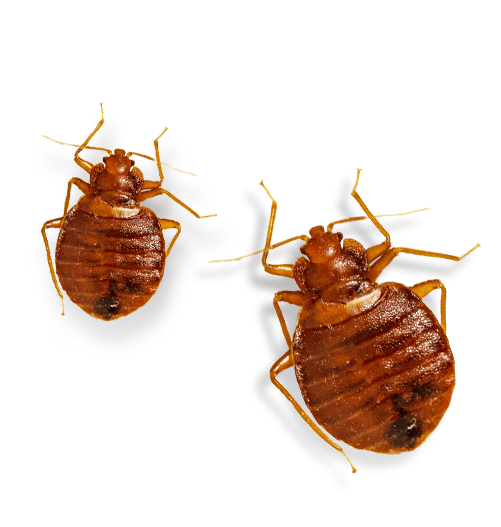Trusted Bed Bug Exterminator Near Me: DC Heat Treatment Specialists
Wiki Article
Discovering the Scientific Research Behind Bed Insect Heat Treatments as a Lasting Pest Administration Strategy
In the world of pest monitoring, the quest for sustainable and reliable solutions stays a continuous quest. One such method that has actually gained traction in recent times is making use of heat therapies to combat bed insect problems. By utilizing the scientific research behind thermal fatality points for these persistent bugs, warmth treatments provide an encouraging choice to conventional chemical-based approaches. The ins and outs of just how heat efficiently gets rid of bed pests and the more comprehensive implications for lasting parasite management practices make this a topic worth checking out better.Bed Insect Heat Treatment Refine

Thermal Death Point for Bed Pests
Exposing bed insects to elevated temperatures past their thermal resistance array is essential for attaining reliable eradication in heat treatment processes. The thermal death factor for bed insects refers to the temperature level at which these bugs can not endure. Study shows that bed pests begin to perish when subjected to temperature levels over 113 ° F(45 ° C) for a sustained period. As the temperature enhances, so does the death rate of bed pests. At around 118 ° F(48 ° C ), bed pests start to pass away quickly, with a death price of almost 99% within minutes of direct exposure. This shows the level of sensitivity of bed insects to heats and highlights the efficiency of heat treatments in eradicating problems. By getting to and preserving temperatures over the thermal death point for bed pests, parasite monitoring experts can ensure detailed elimination of bed insect populations, including hard-to-reach locations where chemical therapies might be less reliable. Recognizing the thermal fatality factor for bed pests is necessary for implementing successful heat treatment strategies and attaining sustainable pest monitoring outcomes.Advantages of Warm Treatments
Having established the critical thermal death factor for bed pests, it is imperative to currently check out the substantial advantages that warm treatments provide in effectively official site eradicating these resistant parasites. When compared to standard chemical techniques, warmth therapies existing a number of essential benefits. Among the main advantages is that warm can permeate deep right into crevices and splits where bed pests conceal, making certain that also one of the most hard-to-reach locations are heated up to deadly temperatures. This thorough method not just eliminates real-time insects however also targets bed pest eggs, protecting against future infestations.Moreover, heat treatments are safe and ecologically friendly, making them a sustainable pest management strategy. Unlike chemical pesticides, warmth therapies do not leave unsafe deposits that can pose dangers to human health or the atmosphere. This element is particularly vital in sensitive environments such as medical facilities, schools, and residential locations where chemical usage might not be desirable.
In addition, warm therapies visite site have a high success price in eliminating bed insect problems in a single therapy, minimizing the need for multiple check outs and decreasing disturbance to owners. This performance not just saves money and time yet additionally offers satisfaction to those dealing with bed bug problems.
Performance of Heat Therapy

Study studies have continually shown the effectiveness of warm treatments in achieving a high price of bed insect mortality. Appropriately conducted warm treatments can get to all the splits and crevices where bed pests might be harboring, making sure an extensive approach to elimination. Heat therapies have actually the included benefit of eliminating bed pest eggs, which are often immune to conventional chemical treatments. In general, the performance of warmth therapies in removing bed insect invasions makes them a dependable and sustainable bug monitoring strategy.
Lasting Parasite Management Perks
Implementing sustainable bug management techniques supplies long-term benefits for both the atmosphere and public health and wellness. By making use of techniques such as warmth therapies for pest control, we can reduce the dependence on damaging chemical pesticides that can have adverse effects on environments and human health and wellness - bed bug treatment. Lasting bug management strategies aid in protecting biodiversity by targeting details bugs without hurting non-target microorganisms, thereby preserving a balanced environment
Furthermore, sustainable bug administration techniques contribute to the overall wellness and well-being of the general public. By minimizing exposure to harmful chemicals visit this web-site used in conventional bug control methods, heat therapies supply a much safer option for pest monitoring in residential, business, and public areas. This decrease in chemical usage additionally assists in preventing chemical residues from contaminating water, soil, and air, guarding ecological high quality.
Verdict
To conclude, bed bug heat therapies have been revealed to be a lasting and reliable bug management technique. The thermal fatality point for bed pests makes them susceptible to heat treatments, which have many benefits over traditional chemical treatments. The performance of warm treatments in getting rid of bed bug problems while minimizing ecological influence highlights the potential of this method as a sustainable service for insect control.The bed pest warmth treatment procedure includes elevating the temperature level within infested areas to a level that properly removes bed bugs and their eggs. By getting to and keeping temperatures over the thermal death point for bed pests, insect monitoring professionals can guarantee detailed elimination of bed pest populations, including hard-to-reach areas where chemical therapies might be less efficient. One of the key advantages is that heat can permeate deep right into crevices and fractures where bed insects conceal, guaranteeing that even the most hard-to-reach areas are warmed to dangerous temperature levels. Unlike chemical therapies that may leave behind immune populations, warm therapies offer a eco pleasant and safe remedy that can pass through deep right into furniture, walls, and other hard-to-reach areas where bed insects conceal.
The thermal fatality factor for bed bugs makes them susceptible to warmth treatments, which have countless advantages over traditional chemical therapies.
Report this wiki page